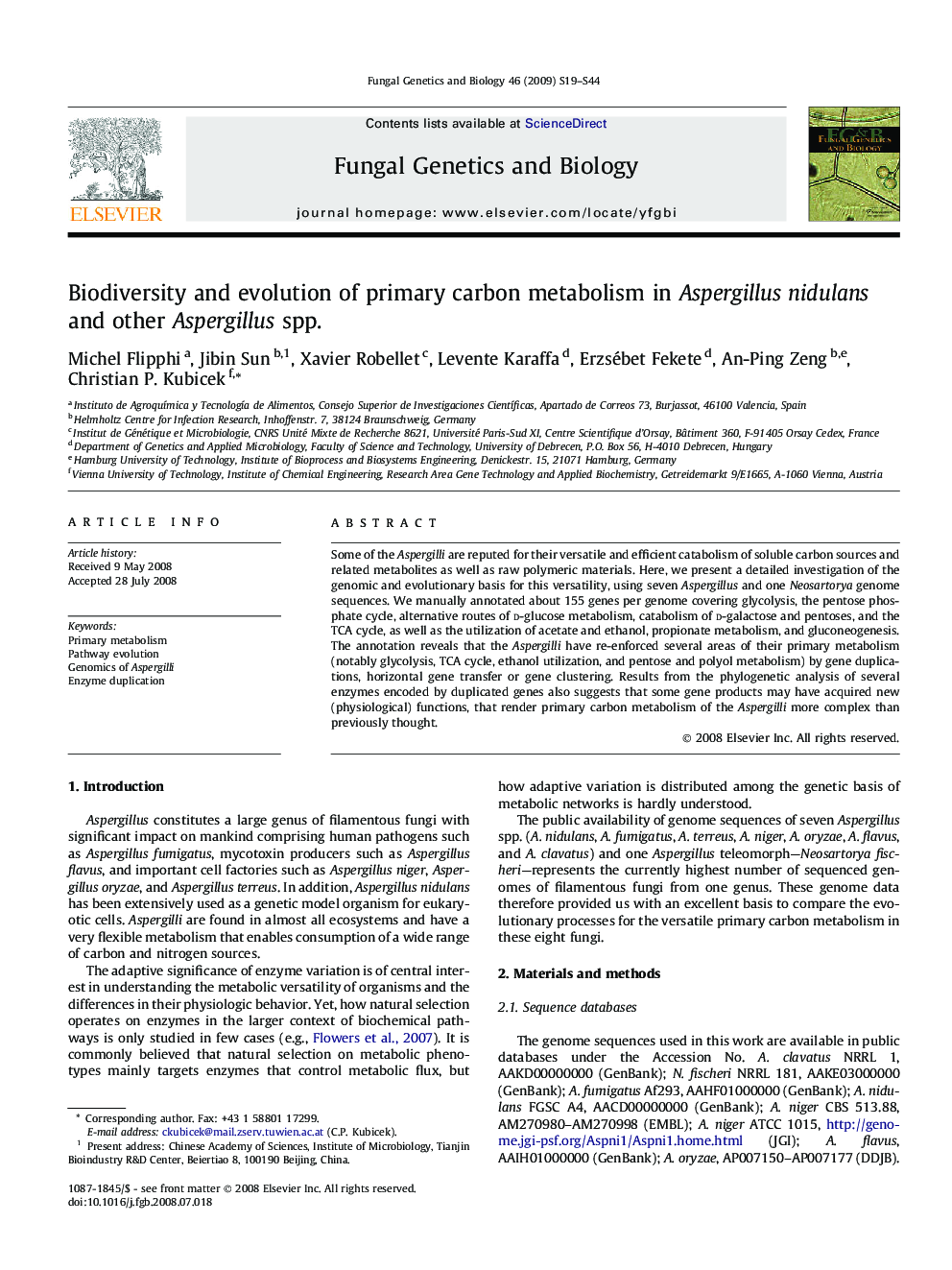| Article ID | Journal | Published Year | Pages | File Type |
|---|---|---|---|---|
| 2181404 | Fungal Genetics and Biology | 2009 | 26 Pages |
Some of the Aspergilli are reputed for their versatile and efficient catabolism of soluble carbon sources and related metabolites as well as raw polymeric materials. Here, we present a detailed investigation of the genomic and evolutionary basis for this versatility, using seven Aspergillus and one Neosartorya genome sequences. We manually annotated about 155 genes per genome covering glycolysis, the pentose phosphate cycle, alternative routes of d-glucose metabolism, catabolism of d-galactose and pentoses, and the TCA cycle, as well as the utilization of acetate and ethanol, propionate metabolism, and gluconeogenesis. The annotation reveals that the Aspergilli have re-enforced several areas of their primary metabolism (notably glycolysis, TCA cycle, ethanol utilization, and pentose and polyol metabolism) by gene duplications, horizontal gene transfer or gene clustering. Results from the phylogenetic analysis of several enzymes encoded by duplicated genes also suggests that some gene products may have acquired new (physiological) functions, that render primary carbon metabolism of the Aspergilli more complex than previously thought.
